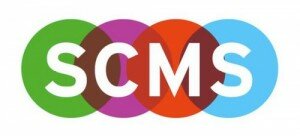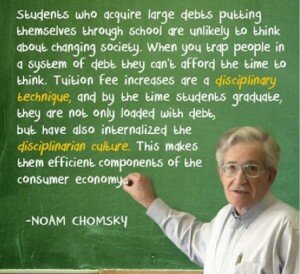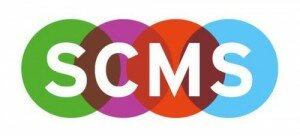 Cinema Journal Teaching Dossier
Vol. 2(2) Spring 2014
Karen R. Achberger
St. Olaf College
Cinema Journal Teaching Dossier
Vol. 2(2) Spring 2014
Karen R. Achberger
St. Olaf College
Since 2007, educators are increasingly turning to a model of instruction called Flipped Learning where lectures and homework are reversed (or inverted): the lectures are viewed outside the classroom and homework assignments are done in class, usually in groups. In this decade of MOOCs (massive open online courses), the Khan Academy and other forums of online education, the advantages of “flipping the classroom” have been well documented [1] as the community of “Flipped Educators” continues to grow [2].
In the flipped learning model, information is conveyed to students efficiently and effectively through exported micro-lectures that can be viewed online at the students’ convenience, with the option of repeating, pausing, and freezing at will, thus obviating the need for extensive note-taking and eliminating the time loss due to technical glitches as a variety of media are seamlessly incorporated into easily digestible 5-10 minute bits of course content.
Presenting focused micro-lectures outside of class also frees up blocks of class time for higher-order student engagement with the course substance and critical methods of the discipline. Students collaborate creatively in small groups to solve problems, respond to questions, or compile evidence to support or refute claims made about the subject in question while the professor is available to move about the room and provide individualized feedback and guidance in response to each group’s ideas and questions. She has the ability to address the class from anywhere in the room and move from group to group, providing assistance or advice to individual students, learning teams, or the entire class. Students can also move around, either to share laptops, tablets, or other devices or to examine the work of other individuals or teams. They may work from multiple devices, sending content to projectors, or huddle near whiteboards, working out a plan or an analysis. Discussion is encouraged and often replaces explanation as the primary avenue to learning.
In the case of German Cinema, students have an opportunity to actively practice film criticism as they take a position on some of the more interesting questions and controversies of the discipline, gathering evidence from the films and their times to support their propositions. Teams of student film critics then debate one another on questions such as: Does the character Hutter exist as a separate individual, or is he part of the vampire Nosferatu? What elements of Murnau’s cinematography suggest the one or the other interpretation? Or, in examining the use of music in Germany’s first feature-length sound film, The Blue Angel, students are asked to uncover how the musical subtexts serve to characterize Lola Lola and Professor Unrat in a way radically different from that of the film’s narrative. They also examine how the music functions to foreshadow the protagonists’ eventual outcomes. Students are asked to gather evidence from the film and its times to support or refute the proposition that The Cabinet of Dr. Caligari (1920), although ostensibly not a war film, is nothing if not a film about the Great War.
There are a number of ways to engage students creatively during the large blocks of class time freed up for active collaborative learning through the use of online lectures. My favorites have been those where students collaborate in small teams to support an argument with evidence from the films and their respective times, applying what they have been learning about the rhetoric of film and about Germany’s troublesome history in order to present their team’s position to the class and defend it together against opposing arguments. These class activities help students develop the ability on the one hand to collaborate and be a “team player” and on the other to make a good argument and support it with empirical evidence, two essential skills in today’s world, as our nation’s top organizations continue to model for us, from the teams of doctors at Mayo Clinic to the teams of statisticians at Google.
The following is a list of changes I have noticed in my flipped German Cinema classroom during the January 2014 Interim, along with some of the findings of flipped classroom studies reported online, with some overlap and in no particular order:
- a shift from teacher-driven instruction to student-centered learning based on collaborative knowledge, discovery, and creation;
- classroom is transformed into a group learning space;
- students interact more in class;
- more individual face-to-face time between student and professor;
- students engage more deeply with content and practice skills;
- students receive more feedback on their progress;
- professors can devote more time to coaching students;
- students get more help with procedural fluency if needed;
- students become the agents of their own learning;
- students take on more challenging projects;
- students are more likely to ask for assistance;
- more self-paced student learning;
- more constant and positive interactions with teachers and peers during class;
- more access to course materials and instruction;
- more choice in how students demonstrate their learning;
- more collaborative decision making with other students;
- more engagement in critical thinking and problem solving;
- more instructor attention to student interests, strengths and weaknesses;
- a more democratized learning environment.
The “flipped classroom” may sometimes be likened to a “blended classroom” or a “MOOC.” Both models are becoming increasingly widespread in the academy and, like the flipped classroom, both serve to redefine and expand the group and individual learning spaces. “Blended learning” is the term generally used to designate the strategic combination of face-to-face and online learning experiences. Courses like the free MOOC offered by UCF and EDUCAUSE serve to assist faculty in designing blended courses and producing online materials for these. Blended courses, however, do not generally emphasize small-group collaboration on homework assignments during the class period. Similarly, the weekly online office hours, online tutorials, interactive user forums and group discussions included in some MOOCs are not comparable to the face-to-face interactions in the flipped classroom.
The interest in flipped classrooms, online lectures, screen-casting and the like at St. Olaf College does not appear to be a recent response to the proliferation of online courses and MOOCs. The move toward using technology as a pedagogical tool at St. Olaf seems rather to have predated the advent of MOOCs and online courses by over a decade. In 2001, the Center for Innovation in the Liberal Arts (CILA) introduced the initiative “Teaching with Technology,” created a task force, and designated participating faculty as CILA associates. It became increasingly common for faculty to teach courses designed around digital materials available electronically online, initially course syllabi, readings and PowerPoint presentations. The college continues to enhance its digital collections, especially in the humanities, as well as offer a number of “Let’s Get Digital” and “iPads in Teaching” workshops and Learning Communities focused on “MOOCs” and “Tools and Techniques for Online Learning.” To date, St. Olaf faculty have offered two Teaching and Technology Showcase presentations (in April 2013 and in May 2014), each with over 20 exhibits on a wide range of topics related to digital teaching and scholarship, from Moodle to MOOCs and beyond.
In keeping with national trends in STEM (Science, Technology, Engineering and Mathematics) courses, flipped classrooms at St. Olaf first appeared a few years ago in Chemistry and Statistics. Likewise, an eight-week ACM-funded pilot course first offered in summer 2013 involved online Calculus taught by faculty at St. Olaf and Macalester, not a MOOC, but a SPOC (small private online course). It is not surprising that evidence of the benefits of active learning over lecturing is strongest from the STEM courses. A report in the Chronicle of Higher Education on the value of the flipped classroom focused on a Biology course and a recent meta-analysis of 225 studies of student performance in STEM courses provided strong evidence on the superior results of active learning over traditional lecturing, further validating educational models like the “flipped classroom.” In spite of the fact that student agency is nothing new, especially at liberal arts colleges, this kind of strong evidence on the different outcomes between active learning and lecturing is encouraging.
In an effort to move digital technology beyond the STEM disciplines, however, two recent Mellon Foundation grants have focused attention on the “Digital Humanities.” The Mellon Foundation “Tri-College Summer 2013 Digital Humanities Seed Grant” provided support for faculty at St. Olaf, Carleton and Macalester colleges to “use digital tools and methodologies to address questions and issues of interest to the humanities.” The funded projects focused on teaching, research, curricular development, or a combination of these areas. A few, like my German Cinema course, developed digital microlectures for flipped and online learning. While creating the digital lectures using ScreenFlow was initially the central focus of my project, flipping the classroom requires above all a new approach to teaching that promotes experiential learning and active student engagement in the classroom.
In late 2013, St. Olaf College received a four-year, $700,000 grant from the Mellon Foundation for “Digital Humanities on the Hill,” to enhance research, teaching, and mentored undergraduate research in the humanities and related humanistic fields in the social sciences, fine arts and interdisciplinary programs through the use of digital technologies. In the case of “German Cinema,” this funding supports efforts during Summer 2014 to curate a collection of digital resources for students to better understand the German silent horror film, The Cabinet of Dr. Caligari (1920), in the context of its times.
This digital collection will provide online access to authentic primary sources for students of German Cinema to use in their group and individual research projects. At the same time, students may also contribute to the digital collection themselves and thereby enlarge it through their own creations, e.g. translations, for those with adequate German proficiency, essays and critical commentaries or annotations of a source. As co-developers of materials, students play an active role in the production of knowledge and thereby serve to enlarge the collection by contributing additional resources for film scholars in future years.
Notes
[1] The University of Washington Library Guide provides extensive information about the flipped classroom. Edutopia lists five best practices for the flipped classroom model. The Chronicle piece made quite a splash when it appeared. The White Paper by Pearson lists the top motivations for higher education faculty to flip their courses. The New York Times‘ “Classroom lectures go digital” discusses flipped learning and online courses of Khan Academy. See also: Literature Review of flipped learning, Dissertation 2012 weighing the efficacy of the flipped classroom model, and a recent meta-analysis of 225 studies shows “active learning increases student performance” in STEM courses.
[2] Since early 2012, the not-for-profit Flipped Learning Network™ (FLN), a free online community of “20,000 Flipped Educators,” serves to provide educators with the knowledge, skills, and resources to successfully implement the Flipped Learning model.
Works Cited
Berrett, Dan. “How ‘Flipping’ the Classroom Can Improve the Traditional Lecture.” The Chronicle of Higher Education, accessed May 28, 2014.
http://chronicle.com/article/How-Flipping-the-Classroom/130857/
BlendKit 2014, a free five-week MOOC on Blended Learning, accessed May 28, 2014. https://www.canvas.net/courses/becoming-a-blended-learning-designer
“Digital History: Teaching and Tools.” The University of Washington Library Guide, accessed May 28, 2014. http://guides.lib.washington.edu/content.php?pid=477334&sid=3909645
Fitzpatrick, Michael. “Classroom Lectures Go Digital.” The New York Times, June 24, 2012, accessed May 28, 2014. http://www.nytimes.com/2012/06/25/us/25iht-educside25.html?_r=1&
“Flipped Learning in Higher Education.” Higher Education White Paper, accessed May 28, 2014.
http://flippedlearning.org/cms/lib07/VA01923112/Centricity/Domain/41/HigherEdWhitePaper FINAL.pdf
Flipped Learning Network, accessed May 28, 2014.
http://www.flippedlearning.org/site/default.aspx?PageID=1
Freeman, Scott, Sarah L. Eddy, Miles McDonough, Michelle K. Smith, Nnadozie Okoroafor, Hannah Jordt, and Mary Pat Wenderoth. “Active learning increases student performance in science, engineering, and mathematics.” Proceedings of the National Academy of Sciences of the United States of America, accessed May 28, 2014.
http://www.pnas.org/content/suppl/2014/05/08/1319030111.DCSupplemental
Hamdan, Noora and Patrick McKnight. “A Review of Flipped Learning,” Flipped Learning Network 2013, accessed May 28, 2014. http://flippedlearning.org/cms/lib07/VA01923112/Centricity/Domain/41/LitReview_FlippedLearning.pdf
Johnson, Lisa W. and Jeremy D. Renner. “Effect of the Flipped Classroom Model on a Secondary Computer Applications Course: Student and Teacher Perceptions, Questions and Student Achievement.” Dissertation University of Louisville, March 2012, accessed May 28, 2014. http://www.pnas.org/content/suppl/2014/05/08/1319030111.DCSupplemental
Miller, Andrew. “Five Best Practices for the Flipped Classroom.” Edutopia, accessed May 28, 2014.
http://www.edutopia.org/blog/flipped-classroom-best-practices-andrew-miller?utm_source=feedburner&utm_medium=feed&utm_campaign=Feed:+EdutopiaNewContent+%28Edutopia%29&utm_content=Google+Reader
“Teaching and Technology Showcase.” St. Olaf College, April 25, 2013, accessed May 28, 2014.
http://wp.stolaf.edu/it/teaching-technology-showcase-2
Topaz, Chad and Kristina Garrett, “Applied Calculus Online Course,” Associated Colleges of the Midwest, Summer 2013 and 2014, accessed May 28, 2014. http://www.acm.edu/off_campus_study/Online_courses0/Applied_Calculus.html?utm_source=%2fcalculus&utm_medium=web&utm_campaign=redirect
Karen R. Achberger, Professor of German at St Olaf College, teaches courses in German language, literature and cinema. “Flipping” her German Cinema classroom was made possible through a 2013 Digital Humanities grant funded by the Andrew Mellon Foundation and “Contextualizing Caligari” will be supported through a 2014 Mellon Foundation grant for “Digital Humanities on the Hill.” She is the author of two books and 27 articles on 20th century German writers, especially the Austrian Ingeborg Bachmann. She has published two translations of stories by the East German writer Irmtraud Morgner and is currently completing an annotated translation of Bachmann’s critical writings for Camden House.



